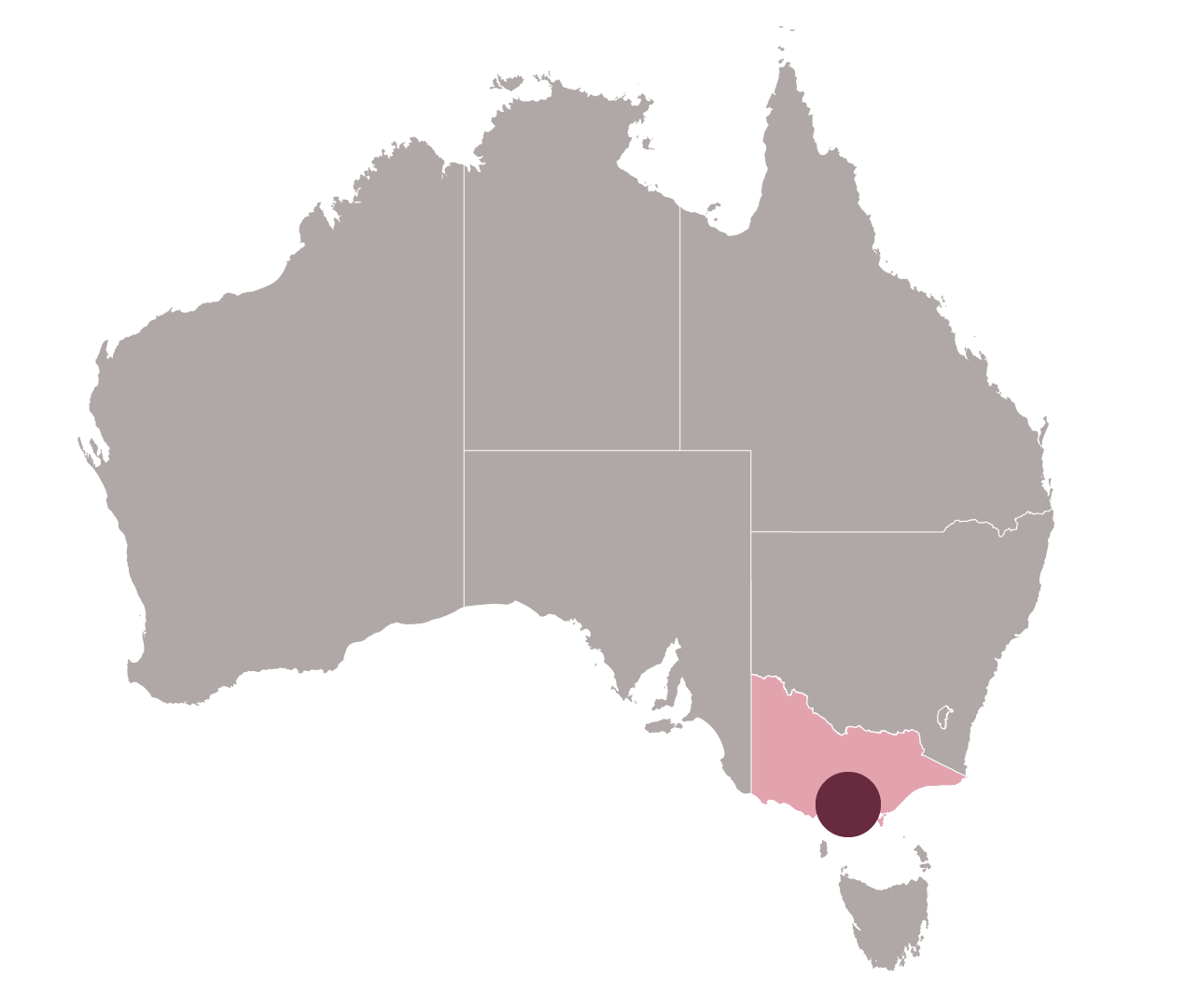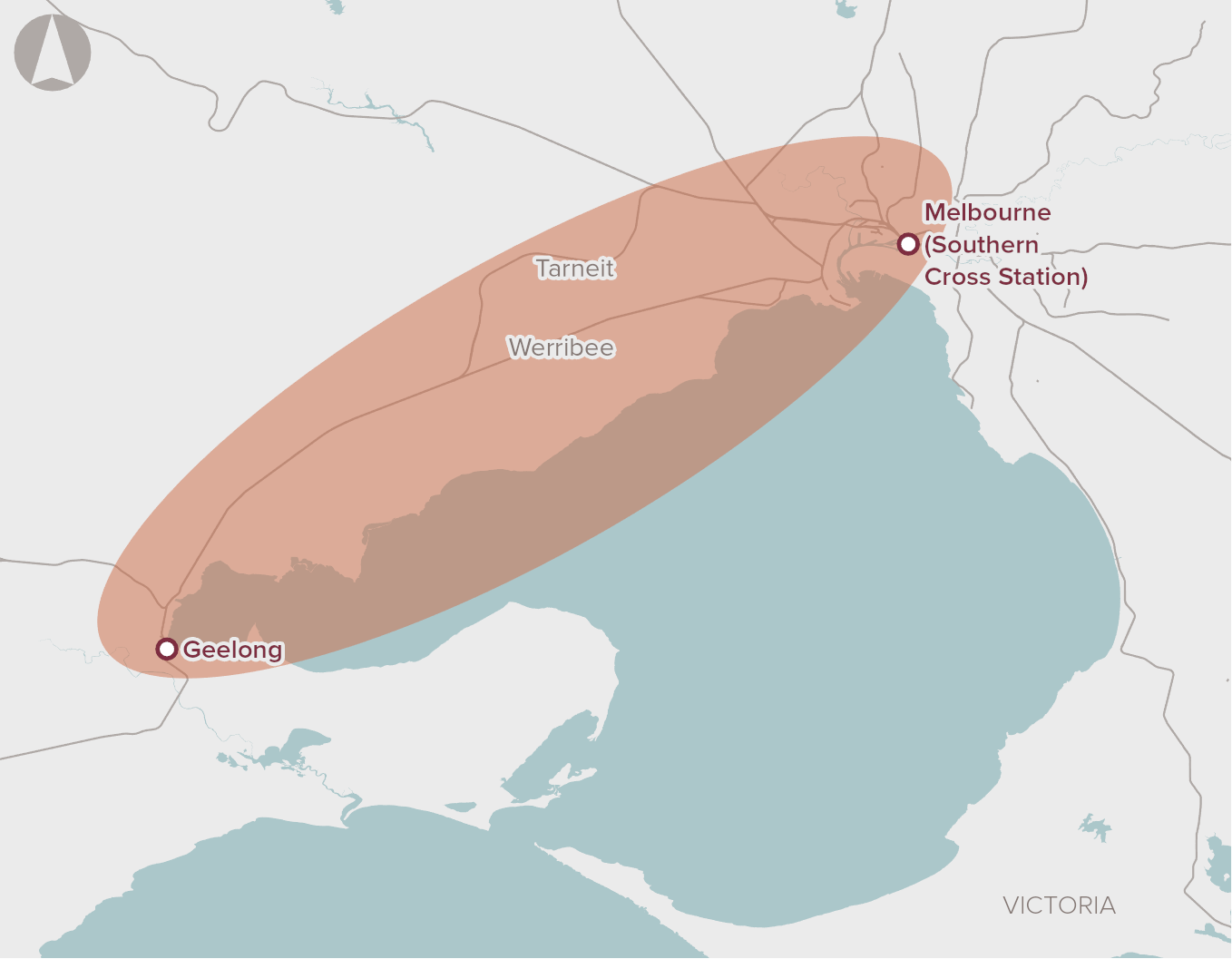

Geelong is Victoria’s second-largest city. Its population is projected to increase from 286,000 in 2016 to 445,000 by 2046. The existing passenger rail line between Melbourne and Geelong is expected to become capacity constrained in peak periods as more people travel between the two economic centres.
Limited capacity, and low train speeds resulting from the inability to run express services between the two centres, will limit Geelong’s potential to grow as an economic hub to complement Melbourne. Increased rail capacity between the two cities, and faster travel times, would not only address emerging demand, but would also provide a nationally significant opportunity to facilitate growth in a key regional city.
There are a number of opportunities to address this emerging capacity gap. The current rail service is provided by diesel trains and has limited capacity. Electrification of the line would allow operation of higher capacity trains with increased reliability and inter-operability with the Melbourne metropolitan rail system. Duplicating the existing single-track pair would also allow for express services to operate through the suburban Melbourne sections of the line, providing faster journey times between Geelong and Melbourne. Current passenger rail services between Geelong and Southern Cross Station take approximately one hour at an average speed of between 70 and 80 km/h.
A faster rail service between Geelong and Melbourne is currently being assessed by the Victorian Government. The Australian and Victorian Governments have each committed $2 billion towards this project.
Future growth in the region will need to be monitored to determine the optimal timing for and scope of infrastructure upgrades for the corridor.
Planning for Stage 1 of the Melbourne to Geelong Faster Rail is underway, with the development of a detailed business case (Stage 3 of Infrastructure Australia’s Assessment Framework) expected to be completed by the end of 2022.


 EVALUATION COMPLETE
EVALUATION COMPLETE




